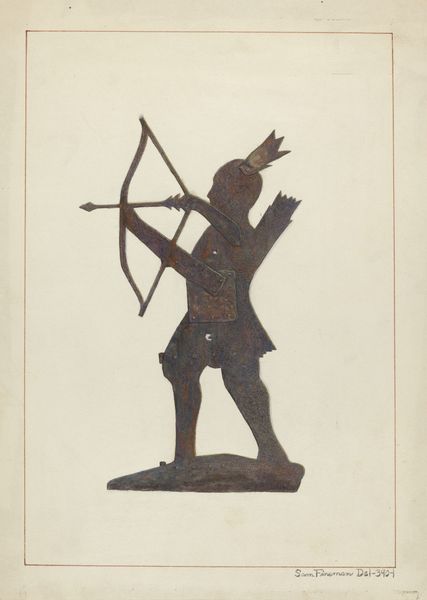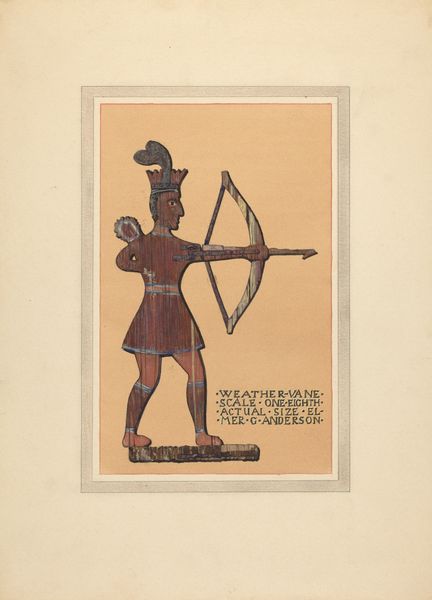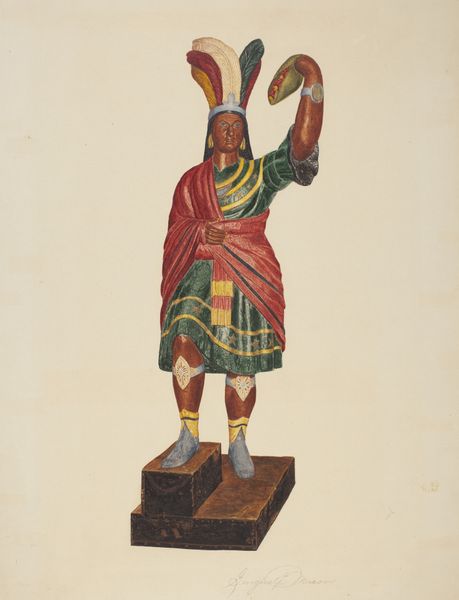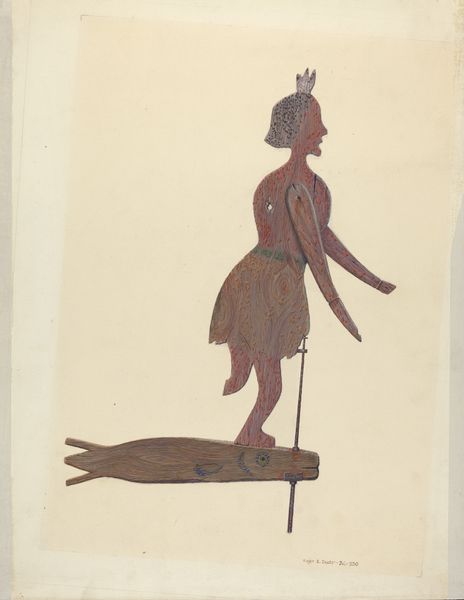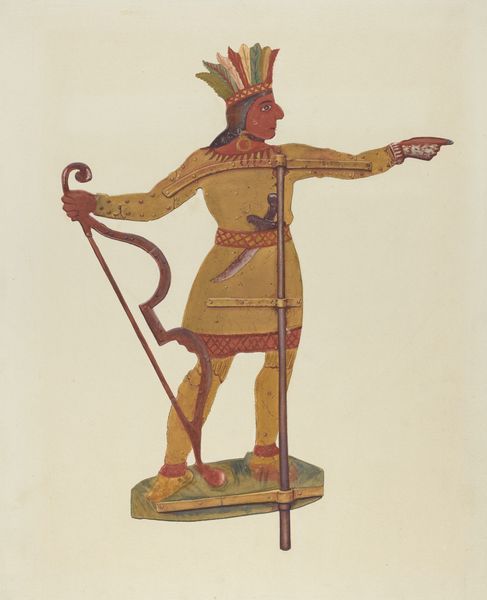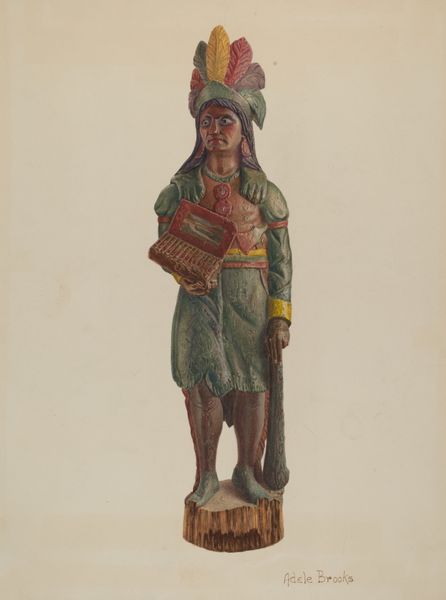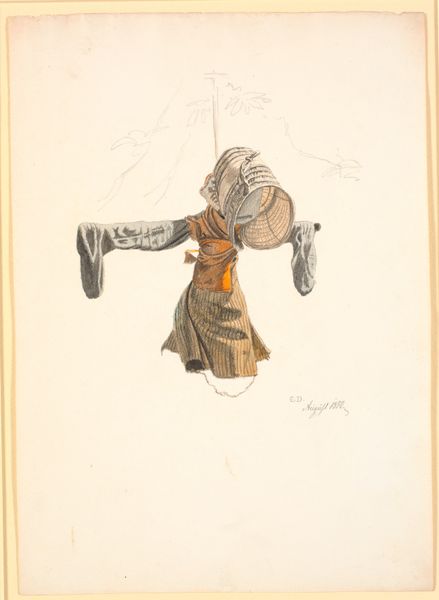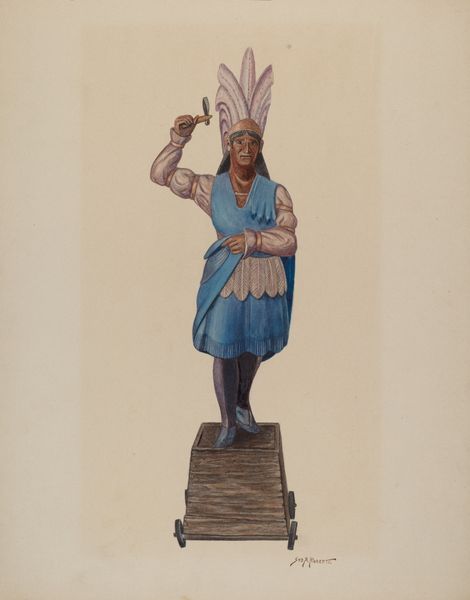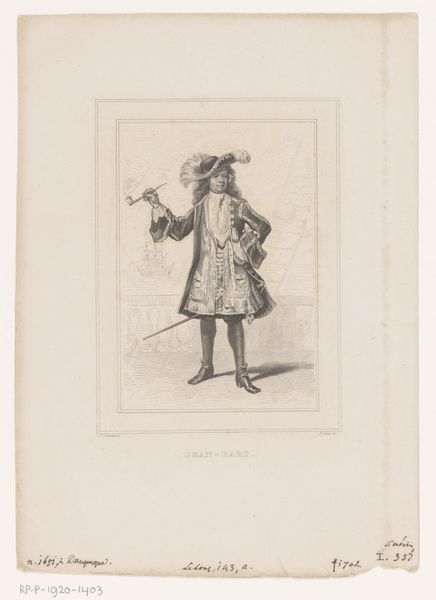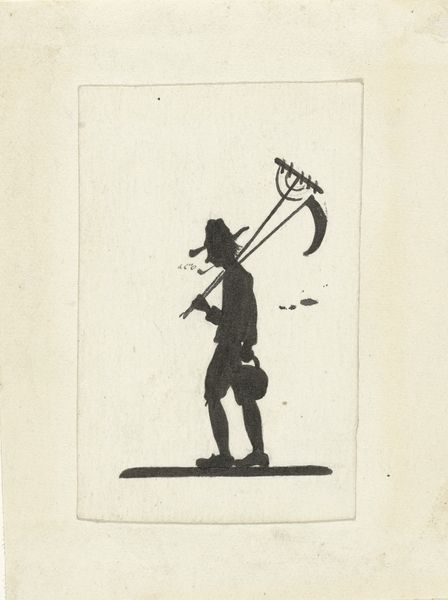
drawing
#
drawing
#
water colours
#
watercolour illustration
#
watercolor
Dimensions: overall: 28.9 x 22.9 cm (11 3/8 x 9 in.) Original IAD Object: 20" wide; 40" high
Copyright: National Gallery of Art: CC0 1.0
Curator: Here we have Edward L. Loper's rendering of an “Indian Chief Weather Vane,” circa 1938, worked in watercolor. What's your immediate read on it? Editor: It’s stark, but there's a dignity in the figure, even in this illustrative form. The colors—the mottled blue of the robe against the earthen browns—speak to something elemental. What's striking is how a simple weather vane design gets elevated to this kind of stoic portrait. Curator: The image feels imbued with a loaded kind of public identity, almost propagandistic when we think about its function as a weather vane. Indigenous representation at this time often came with this level of ambiguity; romanticizing certain elements, while othering in broad, stereotypical strokes. It circulated certain ideas... Editor: And we have the symbolic language of a time deeply steeped in cultural misinterpretations. The figure strides confidently, holding a tomahawk and a rifle, both implements suggesting dominance. He wears only a few feathers, appearing nearly seminude, referencing visual conventions and artistic traditions. What cultural echoes are bouncing around this image? Curator: It invites that scrutiny. A weather vane placed on a building becomes a public declaration, an endorsement of sorts. Loper might have just been documenting something he saw; however, its artistic depiction underscores certain beliefs and assumptions circulating through broader culture, especially when you see similar commercial depictions. Editor: It is quite fascinating, really—how commonplace objects accrue these complex, weighty narratives. It moves me to reflect on both the legacy and continued vitality of the people it represents. Curator: Precisely. And for me, understanding its creation and context adds vital lessons about representation in a broader, historical view.
Comments
No comments
Be the first to comment and join the conversation on the ultimate creative platform.
